


No trace of spiral structure is present in galaxies of this luminosity class. All galaxies of this and of class V in the next panel have very faint absolute luminosities. Furthermore, they have such low surface brightness that they are generally absent from the SA (and hence the RSA). Of the six illustrated galaxies, only SMC, NGC 2366, and NGC 6822 are listed in the main catalog, and the exclusion becomes complete in the next panel.
The galaxies shown here are nearby. Members of the Local Group are SMC, WLM, and NGC 6822. Just beyond the Local Group, and exhibiting a slight velocity of recession, is Sextans B. The two most distant are Holmberg II and NGC 2366, which we consider to be in the M81 / NGC 2403 group. Cepheid variables have been found, of course, in the two classical members of the Local Group (SMC and NGC 6822), and now also in Sextans B and WLM (Sandage, unpublished). There is no doubt that they could be found in NGC 2366 and Ho II as easily as in NGC 2403 itself (Tammann and Sandage, 1968).
The resolved stars in each of these galaxies are blue and red
supergiants brighter than MB
 - 7m. These form a
Population I overlay
to a resolved disk of Population II stars that has been found in SMC,
Sextans
B, WLM,
and NGC
6822. This sheet of background red stars
resolves suddenly at MV = 3m, just as Baade
showed for the background
disk of M31. Hence, these galaxies, dominated by young
Population I stars, are in fact old.
- 7m. These form a
Population I overlay
to a resolved disk of Population II stars that has been found in SMC,
Sextans
B, WLM,
and NGC
6822. This sheet of background red stars
resolves suddenly at MV = 3m, just as Baade
showed for the background
disk of M31. Hence, these galaxies, dominated by young
Population I stars, are in fact old.
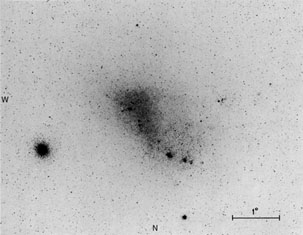
SMC W10-115-Henize ImIV-V -16m.99L 163 km/s | 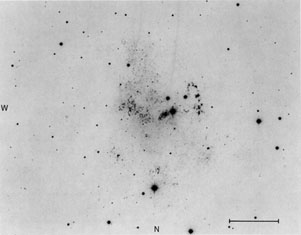
Ho II P200-1600-B ImIV-V -16m.78N |
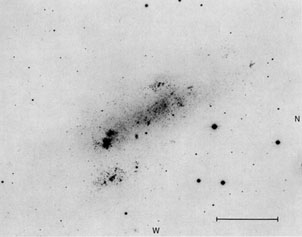
NGC 2366 P200-555-B SBmIV-V -16m.73N 98 km/s | 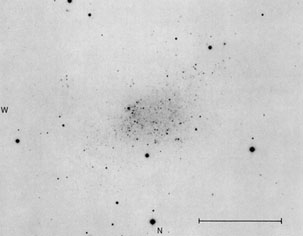
Sextans B P200-7105-S ImIV-V (-15m.5)L |
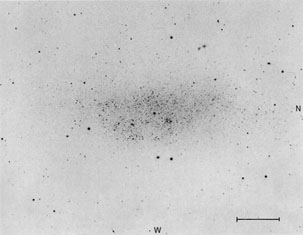
WLM P200-1240-S ImIV-V (-15m.5)L | 
NGC 6822 P200-103-S ImIV-V -15m.25L -49 km/s |